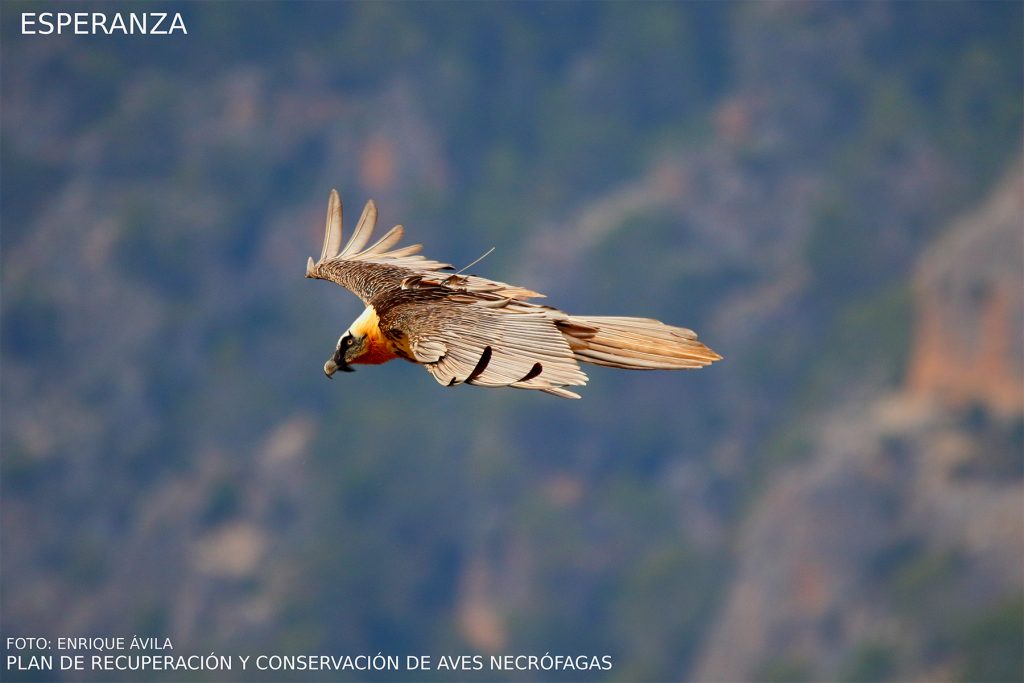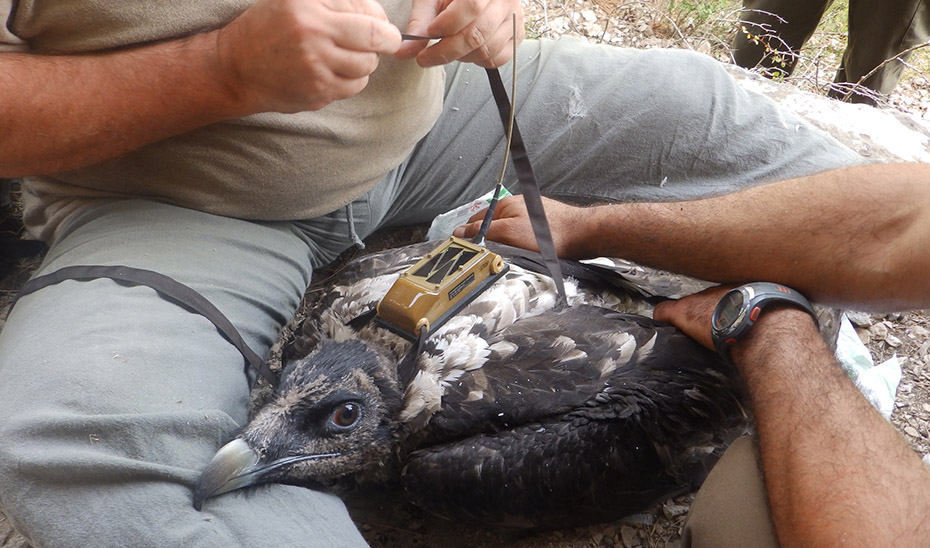
Our Bearded Vulture reintroduction project in Andalusia reached another milestone! Esperanza, the first Bearded Vulture baby that hatched in the wild since the reintroduction programme of this species launched in Andalusia, has built her first nest in Sierras de Cazorla, Segura y Las Villas Natural Park. Although it is premature to say whether laying will start in the end, this is an important finding and a milestone as it is the first time that a wild-hatched Bearded Vulture has joined the breeding population since the species became extinct in Andalusia.
Esperanza hatches in the wild
Esperanza hatched in February 2015 to a young pair of Bearded Vultures bred in captivity. She is the chick of Tono, a male released in the first year of the reintroduction project in 2006, and Blimunda, a female released in 2010. The arrival of a wild-hatched chick in the wild marked an important step forward for Bearded Vulture conservation, and so she was given the name Esperanza, which means hope. She was the first chick of this species to hatch in these natural sites after fifty years without Bearded Vultures in the skies of Andalusia.
Her mother was only four and a half years old when she laid her eggs – the species usually lay eggs when they reach between eight and ten years old. At that time, we thought that this first attempt at reproduction in the wild had little chance of success. Nevertheless, when the team of climbers reached the nest, located in a difficult rocky cliff, they found the chick! They then performed a physical examination and proceeded to mark her with a GPS transmitter and rings to identify her in the wild and track her GPS movements and behaviour.


Esperanza settles in Andalusia
Due to a malfunction of her transmitter, Esperanza’s location became an enigma for years and we even worried that she died. Until February 2019, when we identified again, wandering around several Spanish mountain ranges. From this date onwards, and once we managed to track her movements again, we determined that she definitively settled in Andalusia. She remained in the region with two other Bearded Vultures, Miguel and Nerpio. The three Bearded Vultures have been together in the territory since then. Breeding trios are common for this species.
Bearded Vulture Esperanza builds her first nest in Andalusia
In mid-January 2022, a monitoring team from Coordinación Plan de Recuperación de Aves Necrófagas de Andalucía , of the Junta de Andalucía’s Regional Ministry of Agriculture, Livestock, Fisheries and Sustainable Development, located Esperanza, Miguel and Nerpio building their nest in the seventh year of the female’s life.
This important finding is another success for the programme. “We are moving in the desired direction. For the first time since the Bearded Vulture became extinct in Andalusia, a wild-hatched bird has joined the breeding population”, highlighted the Regional Minister Carmen Crespo.
2022 already marked a historic for the number of clutches laid in the Bearded Vulture breeding centre of Guadalentín, with a total of 16 eggs.
The Bearded Vulture reintroduction project in Andalusia
Bearded Vultures went extinct in Andalusia in 1986 mainly due to direct persecution, wildlife poisoning and human disturbance at the nesting sites. To bring them back, Junta de Andalucía and us here at the Vulture Conservation Foundation started a reintroduction project in 1996, and the former Fundación Gypaetus was also created to manage the project. Since the first releases in 2006 and with the release of eight individuals this year, 79 Bearded Vultures have been released in Andalusia by July this year in the provinces of Jaén and Granada. Thanks to tackling threats and releasing birds, the population of the species is gradually increasing. There are currently five Bearded Vulture pairs and over 40 individuals in Andalusia.
All these great results became a reality thanks to the great work carried out by multiple stakeholders! To follow the news of the breeding season, follow #BeardedVultureBreedingSeason on Facebook, Twitter, Instagram and LinkedIn.

Source: Junta de Andalucía



